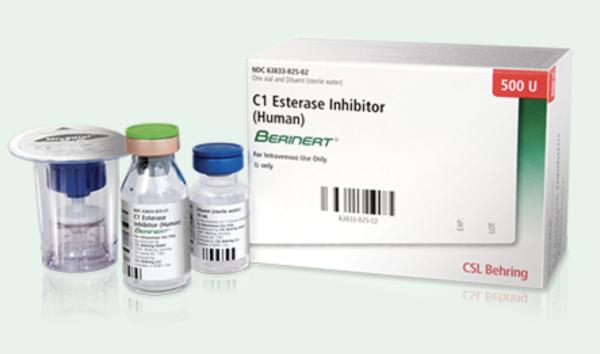C1 esterase inhibitor (human) Interactions
There are 51 drugs known to interact with C1 esterase inhibitor (human), along with 1 disease interaction. Of the total drug interactions, 4 are major, 46 are moderate, and 1 is minor.
- View all 51 medications that may interact with C1 esterase inhibitor (human)
- View C1 esterase inhibitor (human) disease interactions (1)
Most frequently checked interactions
View interaction reports for C1 esterase inhibitor (human) and the medicines listed below.
- Activated Charcoal (charcoal)
- Co-trimoxazole (sulfamethoxazole / trimethoprim)
- Cod Liver Oil (multivitamin)
- Coenzyme Q10 (ubiquinone)
- Copper (copper gluconate)
- Dextrose (glucose)
- Dilantin (phenytoin)
- Diltiazem Hydrochloride SR (diltiazem)
- Ethyl Alcohol (ethanol)
- Ginkgo Biloba (ginkgo)
- Glycerol (glycerin)
- Heparin Sodium (heparin)
- Iodides (sodium iodide)
- Keppra (levetiracetam)
- L-Arginine (arginine)
- L-Carnitine (levocarnitine)
- L-Cysteine (cysteine)
- Lithium Carbonate ER (lithium)
- Metoprolol Succinate ER (metoprolol)
- Metoprolol Tartrate (metoprolol)
- Omega-3 (omega-3 polyunsaturated fatty acids)
- Paracetamol (acetaminophen)
- Quercetin (bioflavonoids)
- Retinol (vitamin a topical)
- Rutin (bioflavonoids)
- Sotalol Hydrochloride AF (sotalol)
- Tramadol Hydrochloride ER (tramadol)
- Valerian Root (valerian)
- Valproate Sodium (valproic acid)
- Vitamin B Complex 100 (multivitamin)
C1 esterase inhibitor (human) disease interactions
There is 1 disease interaction with C1 esterase inhibitor (human) which include:
More about C1 esterase inhibitor (human)
- C1 esterase inhibitor (human) consumer information
- Compare alternatives
- Reviews (7)
- Side effects
- Dosage information
- During pregnancy
- Drug class: hereditary angioedema agents
- Breastfeeding
- En español
Related treatment guides
Drug Interaction Classification
| Highly clinically significant. Avoid combinations; the risk of the interaction outweighs the benefit. | |
| Moderately clinically significant. Usually avoid combinations; use it only under special circumstances. | |
| Minimally clinically significant. Minimize risk; assess risk and consider an alternative drug, take steps to circumvent the interaction risk and/or institute a monitoring plan. | |
| No interaction information available. |
See also:
Further information
Always consult your healthcare provider to ensure the information displayed on this page applies to your personal circumstances.


